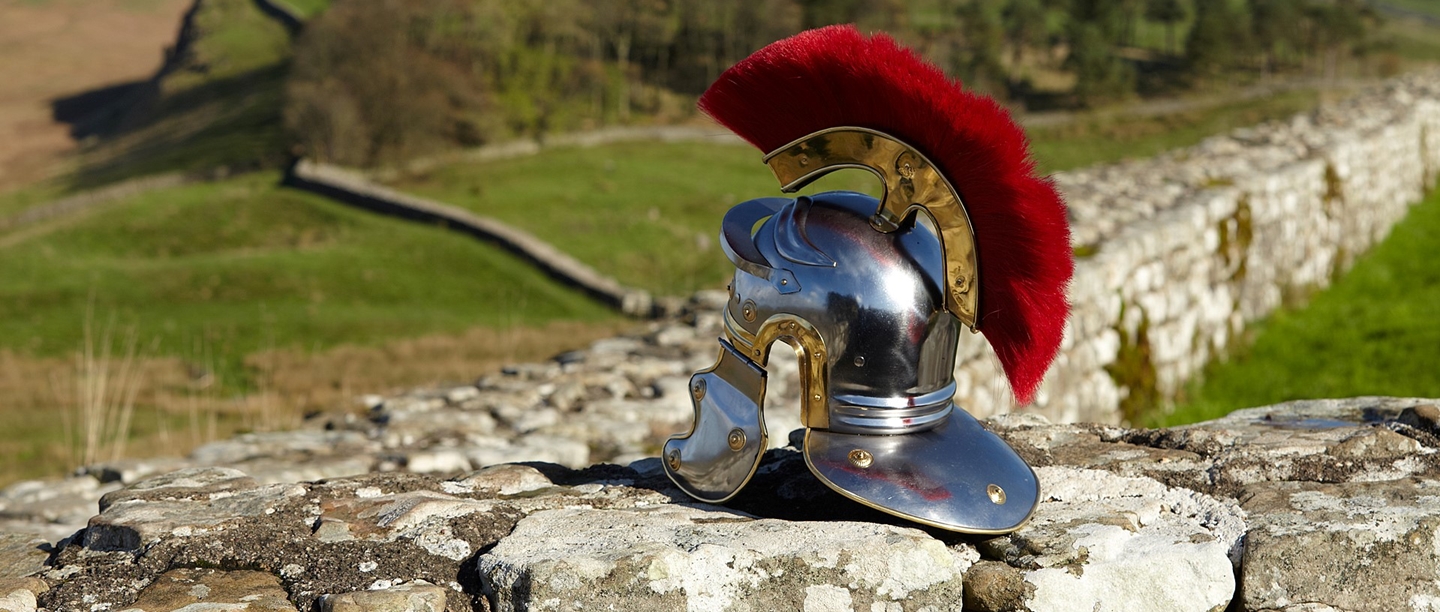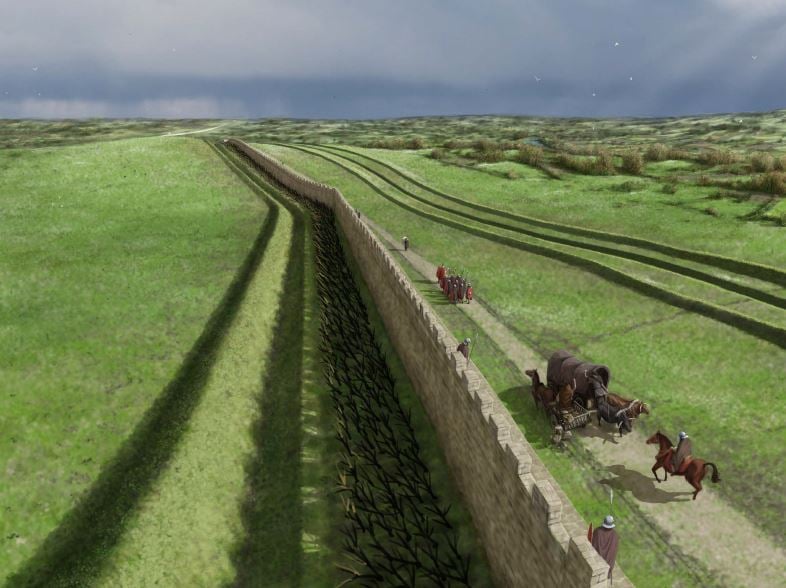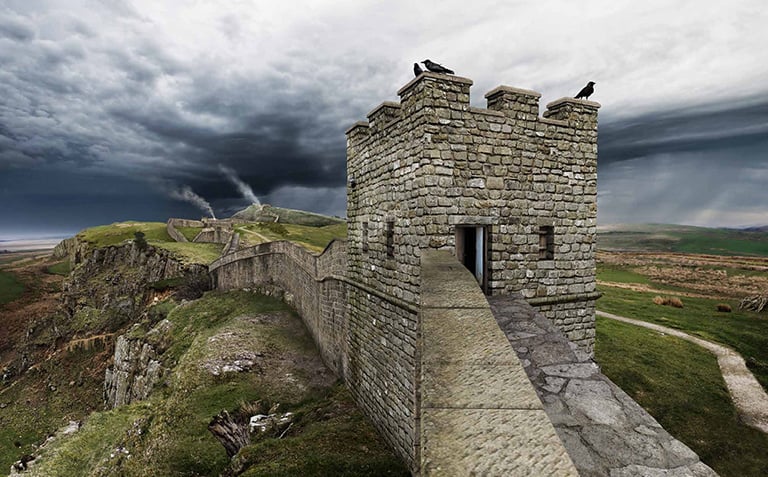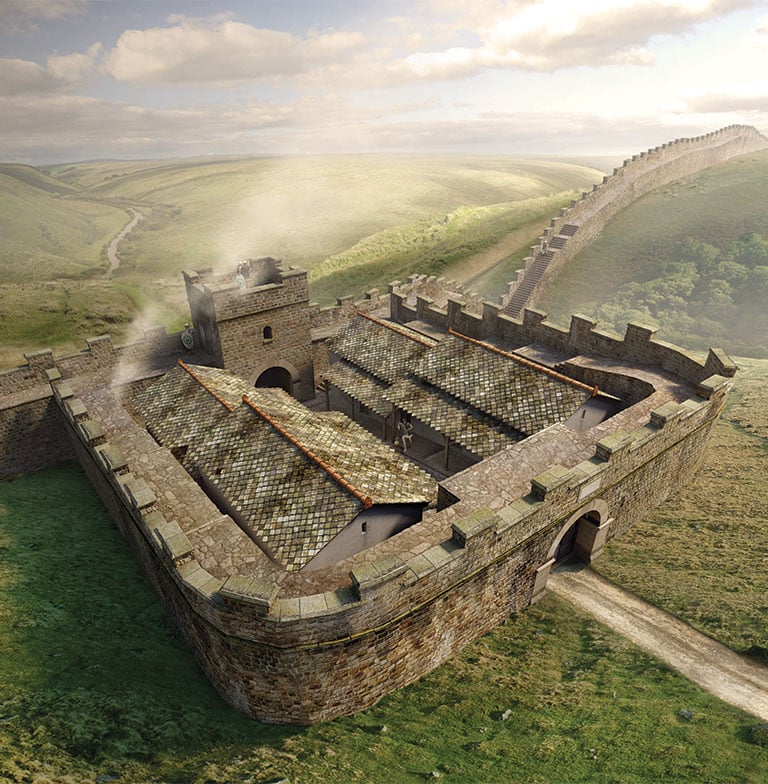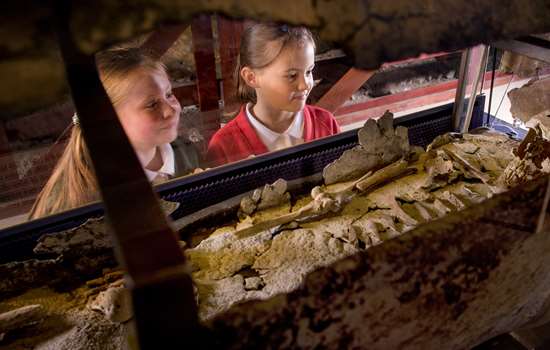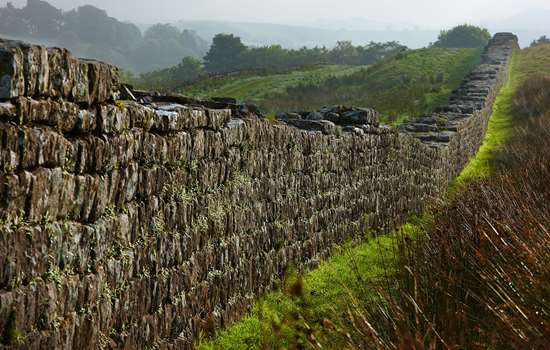Hadrian's Wall at a Glance
This infographic gives you an idea of the scale of Hadrian's Wall. Use this to better understand the key aspects of the Wall before you start building your own version.
Challenge 1: The Wall
Hadrian's Wall is 73 miles (80 Roman miles) long. Most of the Wall was built in stone, except the 30-mile section to the east which was made of turf (earth with grass on top). There was a large ditch in front of the Wall except for places where there are natural crags.
Emperor Hadrian (r. AD 117–138) ordered the building of the Wall in AD 122. He travelled widely during his time as emperor, making improvements to the Roman Empire's borders and defenses.
Now it's your turn to build a section of the Wall! If possible, try building a section that shows both the stone wall and the turf wall as well as the ditch.
Challenge 2: A Turret
There were two turrets between each milecastle along Hadrian's Wall. This means that there was a turret at each third of a mile along the Wall. These acted as observation points and may have been about 10 metres tall, possibly with a roof platform on top. The turrets' walls were 1 metre thick and they had two upper storeys.
Over to you! Try building your own version of the turret shown here at Walltown Crags. You could extend your creation by building a scaled-down mile-long section of Hadrian's Wall featuring two turrets.
Challenge 3: A Milecastle
At each mile along Hadrian's Wall there was a guarded gate protected by a fortlet, or 'milecastle'.
Auxiliaries (non-citizen soldiers) operated Hadrian's Wall. They formed infantry (foot) and cavalry (horseback) regiments stationed in forts along the Wall like Chesters, Birdoswald and Housesteads. They also operated turrets and milecastles like the one at Poltross Burn shown here. People based along the Wall were mostly recruited from the north-western areas of the Roman Empire but some came from further away, both inside and outside the Empire.
Excavations and geophysical surveys have shown that there were large settlements around the forts by the 3rd century. This is where merchants, veterans and soldiers' families lived and worked.
Your go! Create your own milecastle guarding a gate along Hadrian's Wall. You could build a scaled-down version of a mile-long section of the Wall including a milecastle at either end with two turrets inbetween them.
